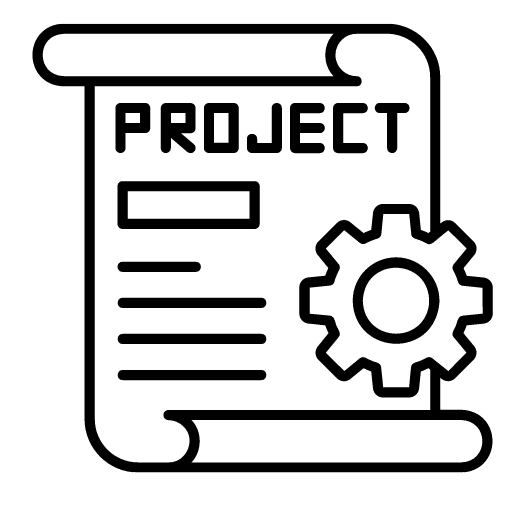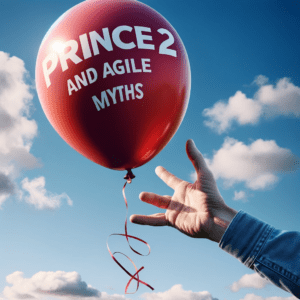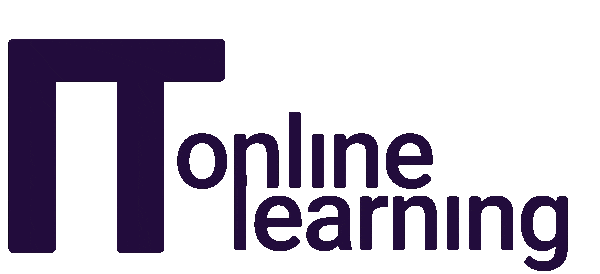The Project Management Office (PMO) plays an important role in ensuring the success of any project.
It acts as the backbone of an organisation, providing support, guidance, and structure to project teams.
In this article, we will explore what the Project Management Office is, its role, types, structure, and the benefits it brings to businesses.
We will also explore the PMO’s future and its relationship with project managers.
What is the PMO?
The PMO, or Project Management Office, is an integral part of an organisation that oversees the management of projects and ensures they align with a company’s objectives.
It acts as a central hub for project-related activities, providing support, guidance, and best practices to project teams.
The PMO is responsible for:
- Establishing project management methodologies.
- Professional standards.
- And tools that enable efficient and effective project execution.
The Role of a PMO Defined
The role of a PMO is multifaceted and varies depending on the organisation’s needs.
Its primary function is to improve project outcomes by standardising processes, implementing best practices, and providing governance and oversight.
This division within a company acts as a strategic partner, working closely with project managers and stakeholders to ensure projects are delivered on time, within budget, and to the required quality standards.
It also plays a crucial role in resource allocation, risk management, and reporting.
Types of PMO That Exist
There are different types of Project Management Offices you typically find in organisations – ranging from supportive to controlling, depending on the level of authority and control they have over projects.
A supportive PMO provides guidance and support to project managers, offering templates, tools, and training to enhance project delivery.
A controlling PMO, on the other hand, has a higher level of authority and control, making decisions and imposing standards on project teams.
There are also hybrid PMOs, which combine elements of both supportive and controlling PMOs to suit the organisation’s needs.
What is the Structure of the PMO?
The structure can vary depending on the size and complexity of the company.
Some PMOs are centralized, meaning they stand alone as an entity within the organisation. Others are decentralized, with PMO functions embedded within various departments.
The PMO can also be a combination of both, known as a hybrid model.
Regardless of the structure, the PMO typically consists of a PMO director/manager, project managers, analysts, and support staff.
What Kinds of Businesses Need a PMO?

The need for this kind of office varies depending on the nature of the business and the complexity of its projects.
Generally, businesses that undertake multiple projects simultaneously or have complex projects with cross-functional teams can greatly benefit from having a PMO.
Construction, IT, healthcare, and manufacturing industries often require this specialist office to ensure effective project delivery and resource management.
However, even small businesses can benefit from a scaled-down version of a PMO to improve project success rates.
9 Ways the Project Management Office Matters
| No. | Ways the PMO Matters | Description |
|---|---|---|
| 1 | Project Governance | Aligns projects with strategic objectives; defines roles and responsibilities, and implements project review processes. |
| 2 | Standardised Processes | Develops and implements standardised project management processes, methodologies, and tools for consistency and efficiency. |
| 3 | Resource Management | Oversees resource allocation to maximise utilisation and minimise conflicts or bottlenecks. |
| 4 | Risk Management | Establishes risk management frameworks and processes to identify, assess, and mitigate risks effectively. |
| 5 | Communication and Collaboration | Promotes effective communication and collaboration across project teams and stakeholders. |
| 6 | Performance Tracking | Establishes project performance tracking mechanisms to monitor progress, identify issues, and take corrective actions. |
| 7 | Increased Success Rates | Significantly increases project success rates through governance, standardised processes, and performance tracking. |
| 8 | Continuous Improvement | Promotes a culture of continuous improvement by conducting project reviews, identifying lessons learned, and implementing best practices. |
| 9 | Stakeholder Satisfaction | Enhances stakeholder satisfaction through governance, standardisation, and effective communication. |
Accredited Project Management Qualifications to Build Your Skills
Accredited and job-focused courses to land or grow into a project management career
PRINCE2®
AgilePM®
APM
PRINCE2 Agile®
Change Management
MSP®
ITIL®
How is a PMO Structured?
The structure of a PMO can vary depending on the needs and preferences of the company.
However, a typical PMO structure includes a PMO director/manager who oversees the PMO’s operations.
The PMO director is responsible for setting the strategic direction of the office, managing stakeholders, and ensuring the PMO’s goals align with the company’s objectives.
The PMO director is supported by a team of project managers, analysts, and support staff who assist in the office’s day-to-day operations.
What Does a High-Performing PMO Look Like? (With Examples)
Strategic alignment
- The PMO ensures projects and programs align with companies strategic objectives and vision.
- Example: A PMO at a software company works closely with senior management to prioritize projects that support the company’s goal of expanding into new markets, such as cloud-based solutions.
Standardised processes and methodologies
- The PMO establishes and enforces standardised project management processes, methodologies, and tools across the business.
- Example: A PMO at a construction firm implements a consistent project lifecycle methodology, from initiation to closure, ensuring all projects follow the same steps and use the same templates and tools.
Data-driven decision making
- The office leverages data analytics and metrics to gain insights into project performance, identify trends, and make informed decisions.
- Example: A PMO at a healthcare organization uses a business intelligence dashboard to track key performance indicators (KPIs) such as project cycle time, resource utilization, and customer satisfaction, enabling data-driven decisions and continuous improvement.
Roles and Responsibilities of the PMO
Again, it’s important to remember that the roles and responsibilities of a PMO can vary depending on the organisation’s needs and the type of Project management office.
However, common roles within a PMO include:
- PMO Director/Manager: Responsible for overseeing the PMO’s operations, setting its strategic direction, and managing stakeholders.
- Project Managers: Responsible for planning, executing, and closing projects in accordance with the PMO’s standards and methodologies.
- Analysts: Responsible for analysing project data, preparing reports, and providing insights and recommendations to project managers and stakeholders.
- Support Staff: Provide administrative and logistical support to the PMO and project teams, including scheduling meetings, maintaining project documentation, and facilitating communication.
Who Works in the PMO?

A diverse group of individuals with different skill sets and backgrounds works in the PMO.
Project managers with expertise in various domains are an integral part of this.
Analysts with strong analytical and reporting skills ensure project data is effectively captured and utilised.
Support staff helps in managing the administrative aspects of project management.
Additionally, the PMO may collaborate with subject matter experts from different departments to ensure project success.
The PMO and the Project Manager: Differences and Similarities

Two important players in companies when it comes to managing projects are the Project Management Office (PMO) and the Project Manager.
While both of these work towards the same goal of successfully completing projects, they have different roles and responsibilities.
The main differences between the PMO and the Project Manager include:
- The PMO manages many projects, while the Project Manager focuses on one or a few specific projects at a time.
- The PMO considers the big picture, ensuring projects align with goals and setting standards for project management. The Project Manager, on the other hand, deals with the day-to-day tasks of running a project, such as planning, executing, and keeping things on track.
- The PMO reports to top management and has the power to assert project management best practices across an organisation. Project Managers report to the PMO or a program manager and can make decisions about their own projects.
- The PMO manages resources, people, and skills across all projects, while the Project Manager manages the resources for their specific project.
Although they have different roles, the PMO and Project Manager also have some things in common

- They both work hard to make sure projects are successful and bring value to the company.
- They both think it’s important for everyone involved in a project to work together and communicate well.
- They follow tried-and-true methods and best practices to keep projects running efficiently.
- They’re always looking for ways to improve by learning from past projects and trying out new ideas.
Explored: The Future of the PMO
The Project Management Office (PMO) has grown over the years, and its importance has grown as more companies rely on projects to achieve their goals and create value.
Right now, PMOs are seen as essential parts of organisations, providing guidance, standardisation, and support for project management practices across the board.
Challenges facing modern PMO’s include:
- Proving their worth: PMOs must constantly demonstrate their value to the organisation by improving project success rates, saving costs, and aligning projects with business goals.
- Adapting to new ways of working: With agile and hybrid project management approaches becoming popular, PMOs must be flexible and change their processes and practices to support these methods effectively.
- Managing limited resources: PMOs often struggle with tight budgets and must find ways to maximize their resources, prioritise projects, and ensure the right people with the right skills are available when needed.
- Keeping up with technology: As project management tools and technologies improve and are impacted by AI, this office must stay up-to-date and use these advancements to improve efficiency, collaboration, and decision-making.
Despite these challenges, the future holds exciting opportunities for PMOs

- Becoming strategic partners: This office can work closely with senior management to align projects with wider business goals, drive innovation, and deliver business value.
- Supporting agile transformation: Agile methodologies and approaches are a big focus for organisations and their people, PMOs can play a key role in helping project teams by providing training, coaching, and support.
- Making data-driven decisions: With more project data available, PMOs can use advanced analytics and AI to gain insights into project performance, identify trends, and make informed decisions to improve project outcomes.
Let’s recap what we’ve covered so far:
The PMO plays an important role in ensuring project success and driving organizational performance.
From governance to resource management, this office provides project teams the necessary support, guidance, and structure.
The Project Management Office enhances project outcomes and stakeholder satisfaction by standardizing processes, promoting collaboration, and fostering a culture of continuous improvement.
As businesses realize the value of a well-functioning PMO, its future looks promising, with an increased focus on strategic alignment and leveraging technology for improved project delivery.




